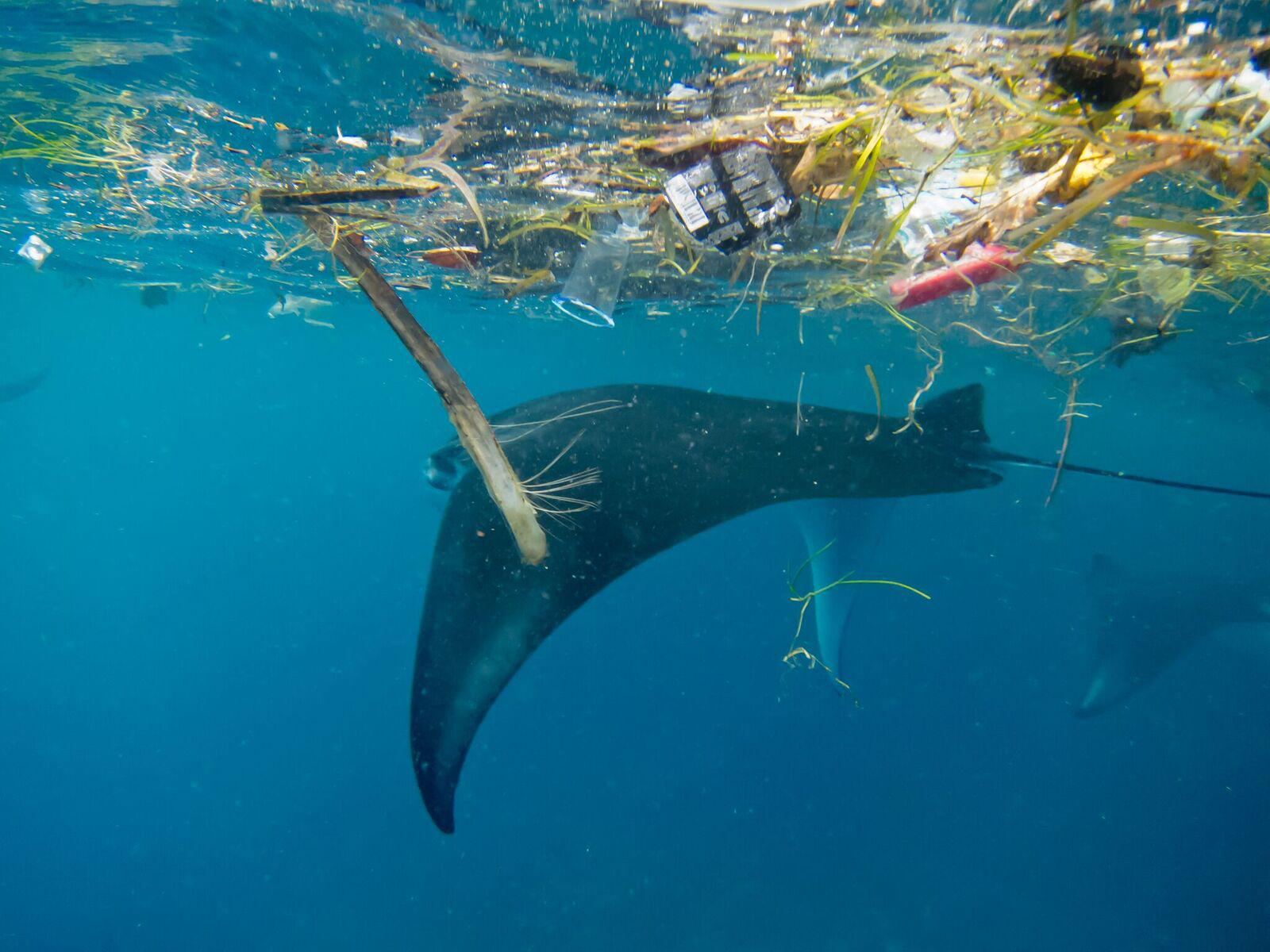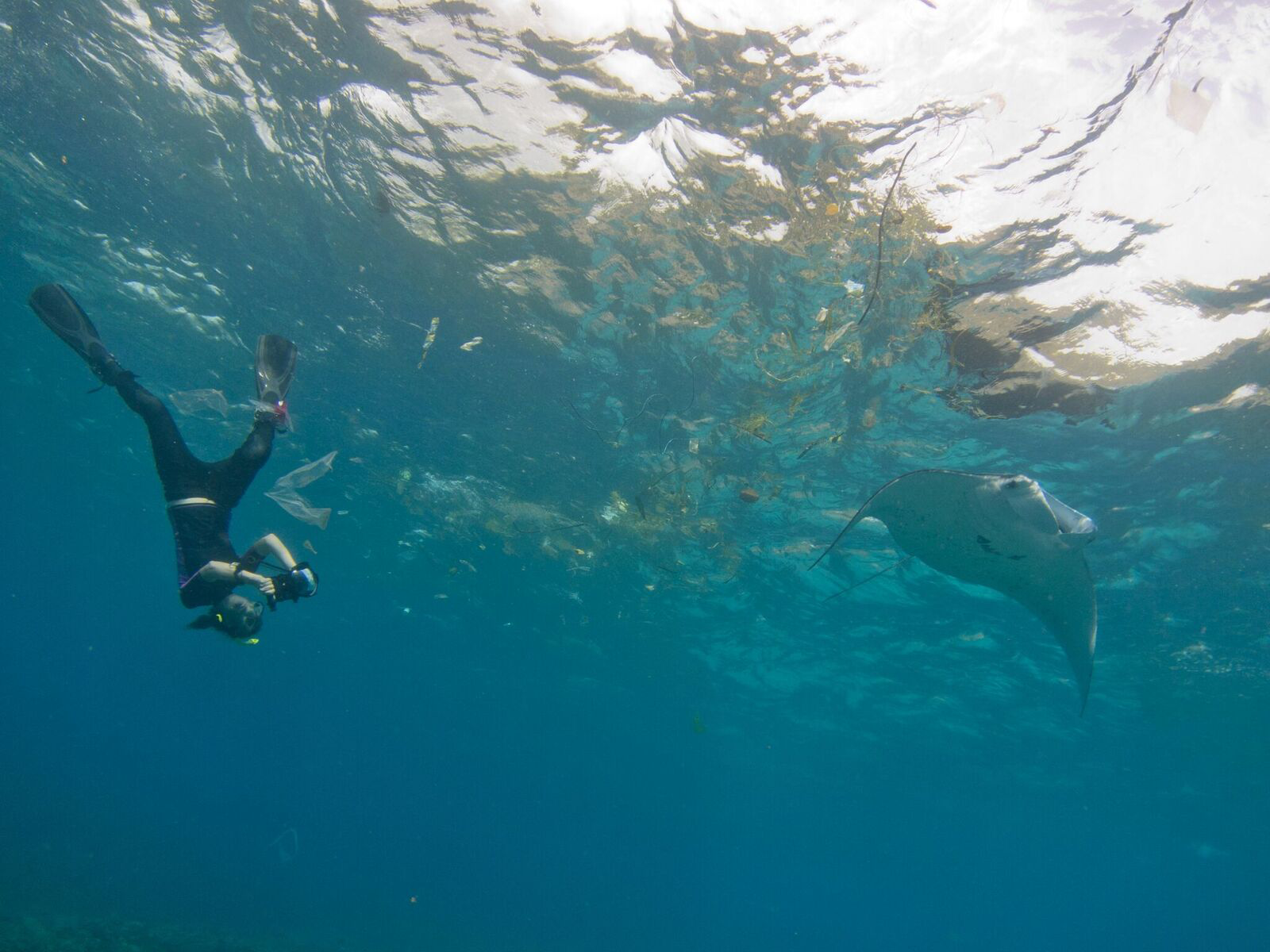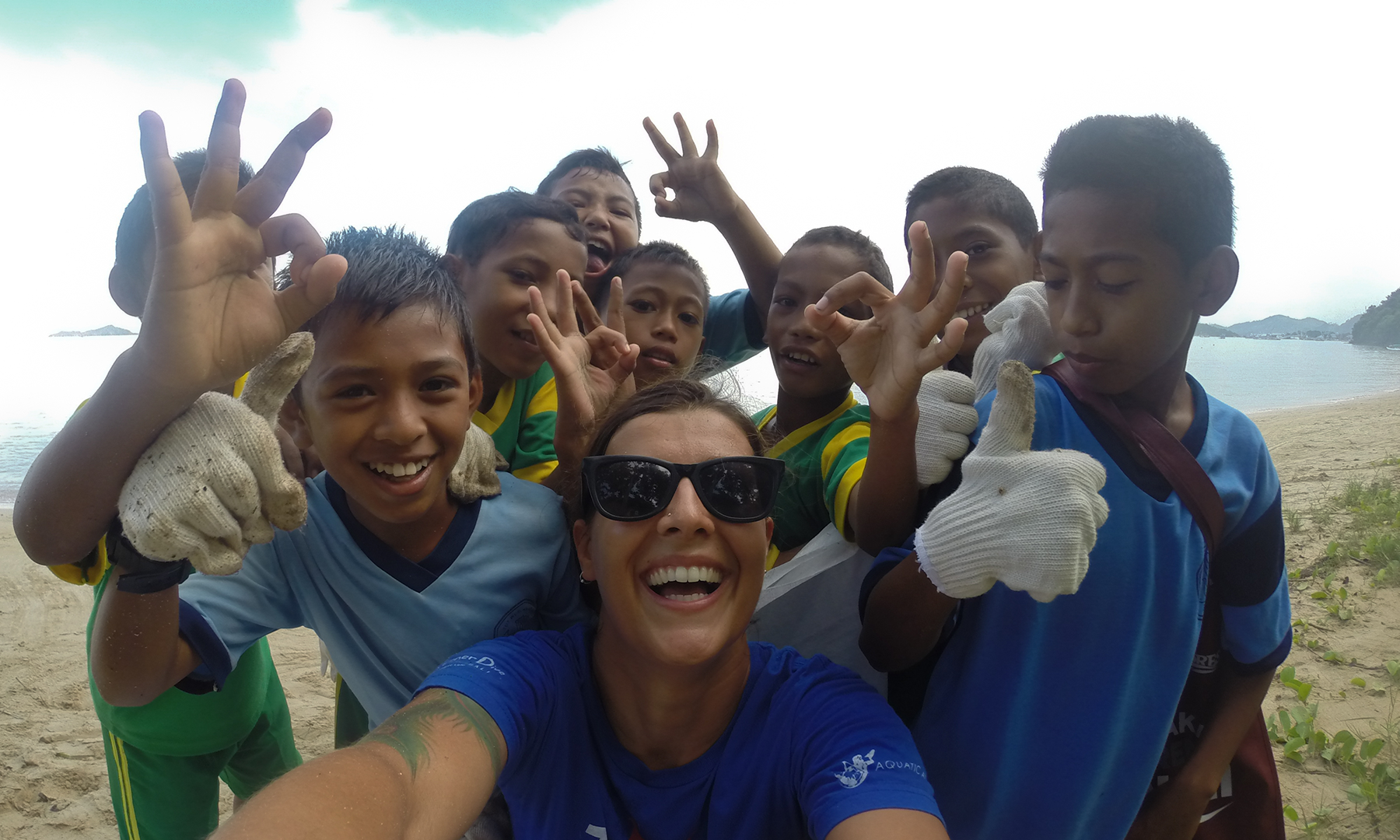Why Plastics are Bad News for Filter Feeders
Published by Ocean Conservancy
Elitza Germanov is a microbiologist turned marine scientist through her passion for scuba diving and volunteering. As a scuba diver, she observed the challenges faced by our ocean and its inhabitants firsthand—especially those associated with marine debris. Elitza’s experiences motivated her to pursue a career in research with Murdoch University and the Marine Megafauna Foundation to join the fight against marine debris with a project called Microplastics & Megafauna in a highly vulnerable region: the Coral Triangle.
How did you become interested in microplastics and megafauna?
Large pieces of plastic are easily visible on beaches and in the water column. When I learned that plastic doesn’t degrade, but instead breaks up into smaller pieces, I was concerned about large filter feeding animals that are likely unable to distinguish small plastics from their food. My research brought me to Indonesia and the Philippines, where the issue of marine plastics is most pressing. Not only are there vast amounts of marine debris, but these countries coincidentally border the world’s most biodiverse marine region, the Coral Triangle.


Which marine animals do you study? What is their normal diet, how do they feed and how do microplastics impact that?
I study large filter feeding fish, mostly mobulid rays and whale sharks. To feed, these animals take in large quantities of seawater through a specialized filtering structure in their mouths. This filter allows them to keep small nutritious animals, such as zooplankton, fish eggs and larvae, and dispel excess water. Although filter-feeding animals have varying techniques, none are known to be able to differentiate food from microplastics. Not only are microplastics able sneak through evolutionarily perfected filters, but even the smallest animals, like zooplankton (the very source of food for filter feeders), ingest microplastics. Furthermore, the sponge-like quality of microplastic attracts pollutants. Over time, exposure to microplastics and toxins will amplify as these compounds become entrenched in food webs.
What have you found so far in your research?
Sadly, I have confirmed the presence of microplastics in some of the feeding grounds of Indonesia’s manta rays. From my first field season I was able to estimate that rays feeding near the surface in southern Bali and Komodo National Park are potentially ingesting 40 to 90 pieces of plastic per hour of feeding. I am currently investigating seasonal trends that suggest increased levels of plastic debris in the water during the rainy season. Observing these trends is crucial to determining potential solutions to marine debris issues in the Coral Triangle.


What types of plastics have you found, what do you think they originally were and which are the most hazardous to marine animals?
The most common items, seen in both large and micro-sized pieces, are the soft plastic materials from plastic bags, wrapping and packaging. We also see many fragments of larger, harder types of plastic—think plastic disposable cutlery and plastic bottle caps. Exposure to the sun and ocean environment fragments the plastic into small, sharp shards. Additionally, we see the small white foam balls that make up polystyrene containers, cups and cooling boxes. Lastly, we see fibers from fishing lines, nets and artificial textiles. We have yet to determine which type of plastic is most hazardous to filter feeders and other marine life; however, if I had to guess I would say all may be problematic in the long run.
Highlights from the job?
Over the past two years I have had the opportunity to work with passionate Indonesian students. After just one day of field observations, they begin to make changes to their daily habits—like bringing their own shopping bags or turning down straws for their drinks. Their actions set a good example for others and spread awareness for the issue. It is amazing how quickly communities can adapt and understand.


How can everyone help?
Start with your own daily habits! Reduce your use of items such as plastic drink bottles, plastic bags, plastic takeaway containers, plastic or Styrofoam coffee cups, plastic drinking straws and cigarettes. Volunteer in a local cleanup. Also, consider contributing to conservation and research projects with a donation.
Anything else?
It may be hard for some people who have not experienced the wonders of the ocean to connect with some of these issues it is facing. I would encourage people to get out in nature however they can, whether it be the local park or swamp lands. If we don’t learn to appreciate the beauty of nature we will never invest enough energy and effort to conserve it.
The post Why Plastics are Bad News for Filter Feeders appeared first on Ocean Conservancy.
Read the full article at: https://oceanconservancy.org/blog/2017/08/29/plastics-bad-news-filter-feeders/


